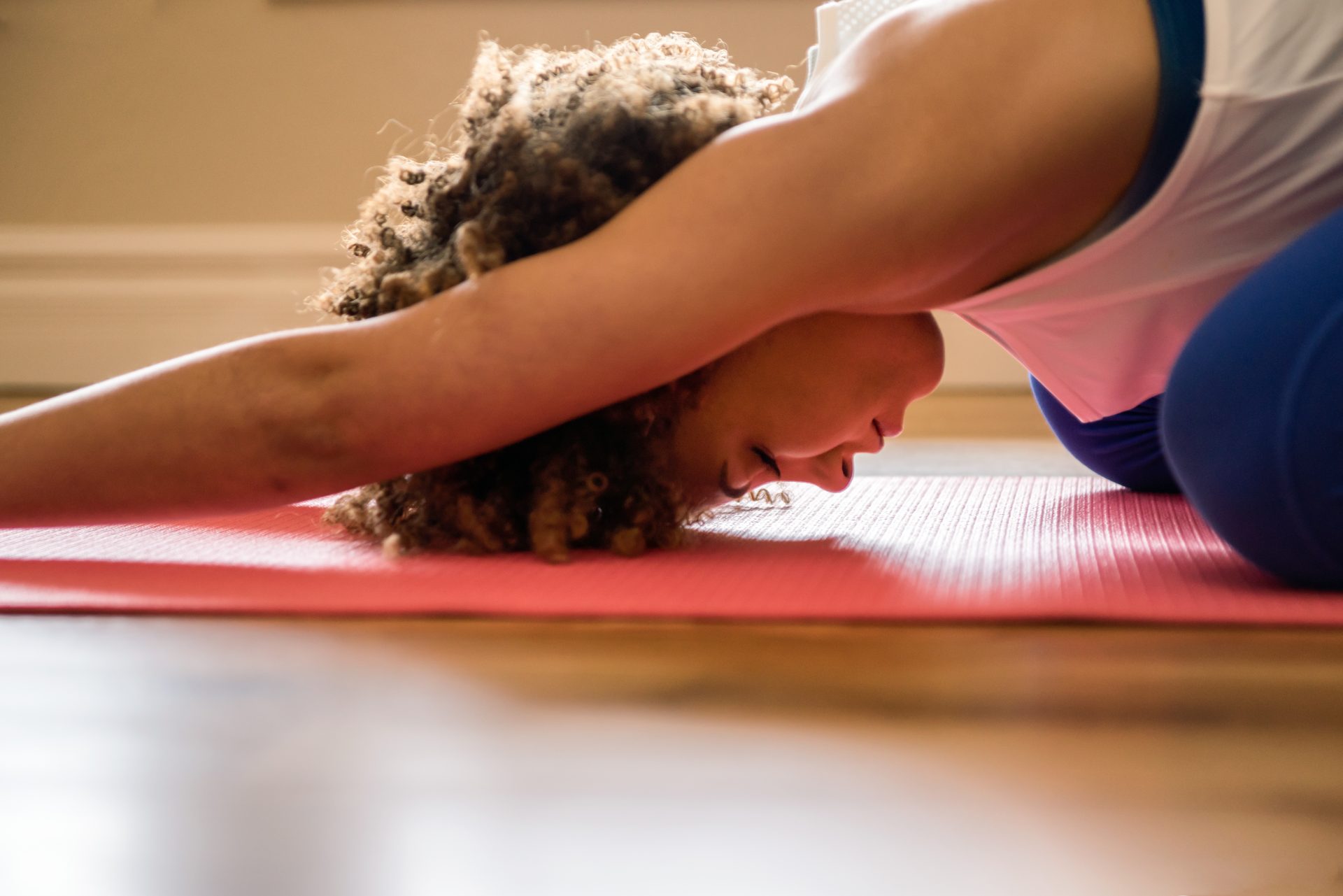Is decompressing your spine the key to alleviating back pain?

Is it good to decompress your spine? We asked an expert about the buzzy workout concept thought to ease back pain.
Exercises that decompress your spine are popular in yoga and mobility practices. You might have heard your stretch instructor telling you about the concept as you perform moves like pavanamuktasana or child’s pose that stretches out the back of the body. There are also lots of videos on social media showing trainers simply hanging from pull up bars in order to decompresses their spines, too.
Given that so many of us who work at a desk complain about back ache at some point – even those of us who sit up straight and roll our shoulders back — could spinal decompression be the key to pain-free working and living?
What is spinal compression?
Before thinking about decompressing our spines, let’s talk about what is actually compressing them.
“Compression of the spine is a natural process that happens on a day-to-day basis from the moment we learn to walk,” explains osteopath George Berrett from OsteoAllies. “It happens when we are sat down or static for long periods of time, if we have been carrying or lifting heavy objects and naturally as the spine supports our own bodyweight against gravity.”
Compression itself simply means force or pressure, in this instance usually on the discs, says Berrett: “The discs in our spine act as decompression plates to help distribute load and weight from our upper body to our lower body. Imagine them as small jam doughnuts, with the outer shell helps deal with forces such as rotation (when we twist) and bending (forwards, backwards and to the side) while the jelly on the inside of the disc helps to reduce compression and bounce back when put our spine under load.
You may also like
How to improve your fitness if you sit down all day at a desk
“Therefore, as the day goes on our back will have been exposed to a progressive level of compression, resulting in increased pressure on the discs and joints in our backs, which in some cases can result in a sensation of stiffness in the back and potentially discomfort.”
Do we need to decompress our spine?
As Berrett explained, our spine is designed to take on load throughout the day and withstand compression. “However, as we get older the discs in our spine become less resistant and may not be as efficient in decompressing the spine. Plus, if we apply too much compression to the back it could lead to an increased load on specific areas of the discs, putting them at more risk of becoming injured or strained,” Berrett says.
As you can imagine, our modern lives add a lot of compression to our spines. When we sit down for long periods of time (think eight hours at your desk) and do intense workouts, we put more pressure on our spine than it can realistically take. “Therefore, making sure we have techniques and methods to help decompress our spine is very important,” says Berrett.
How to decompress the spine
Movements that oppose the downward force on your spine are a good way to feel the release of the force. It’s why the hanging exercise that’s going viral feels so good, says Berrett: “Hanging uses gravity and our natural bodyweight to decompress the discs and joints.” But there are many other ways to go about it:
Movement
“I would advise everyone to do some form of stretching or exercise daily,” says Berrett. Some of his favourite include:
Knee hugs
- Lie on your back and hug both knees in towards your chest.
- Play with positioning to feel the extension through the back of the body as the muscles, joints and discs in the lumbar spine elongate.
- Hold for up to 30 seconds, once in the morning and once in the evening

Dead hangs
- Grip a pull up bar or sturdy object you can hang from.
- Lift your feet off the ground (bend your knees and tuck your feet behind you if they touch the floor), let your shoulders rise to your ears and hang still without swinging.
- Hang for as long as you can grip to the bar, feeling your lower back lengthen.
Child’s pose
- Sit on your heels with your feet together and knees spread wide.
- Lean your upper body down towards the mat, pushing your hips back to your feet.
- Extend the arms in front of you to stretch through the back of the body.
- Hold for 30 seconds at a time.
You may also like
Back pain: 3 pilates moves to alleviate back aches
Sleep more
“Getting a goodnights sleep is important to help spinal decompression. Seven to nine hours is recommended because as we lie down to sleep there is no compression on our discs. Sleep also allows repair and restoration in the body. Your spinal disks rehydrate and regain their height so you wake up to them feeling more mobile,” says Berrett.
Hydrate, hydrate, hydrate
Remember that the centre of our discs is like jelly. “A large composition of that structure is water, so making sure we stay hydrated is important for keeping our discs strong,” says Berrett.
You may also like
“Can dehydration affect your sleep?” A sleep expert answers your questions
Work better
“If you work at a desk for long periods of time, reassessing your ergonomic set-up is crucial. Making sure to sit upright instead of slouching in our chairs helps to distribute weight into our spine more evenly and reduces tension,” says Berrett. And remember to get up, rather than sit all day. “Movement helps to distribute the weight and it activates our muscles in our low backs to help reduce pressure while keeping the spine pliable and free.”
Images: Getty
Source: Read Full Article